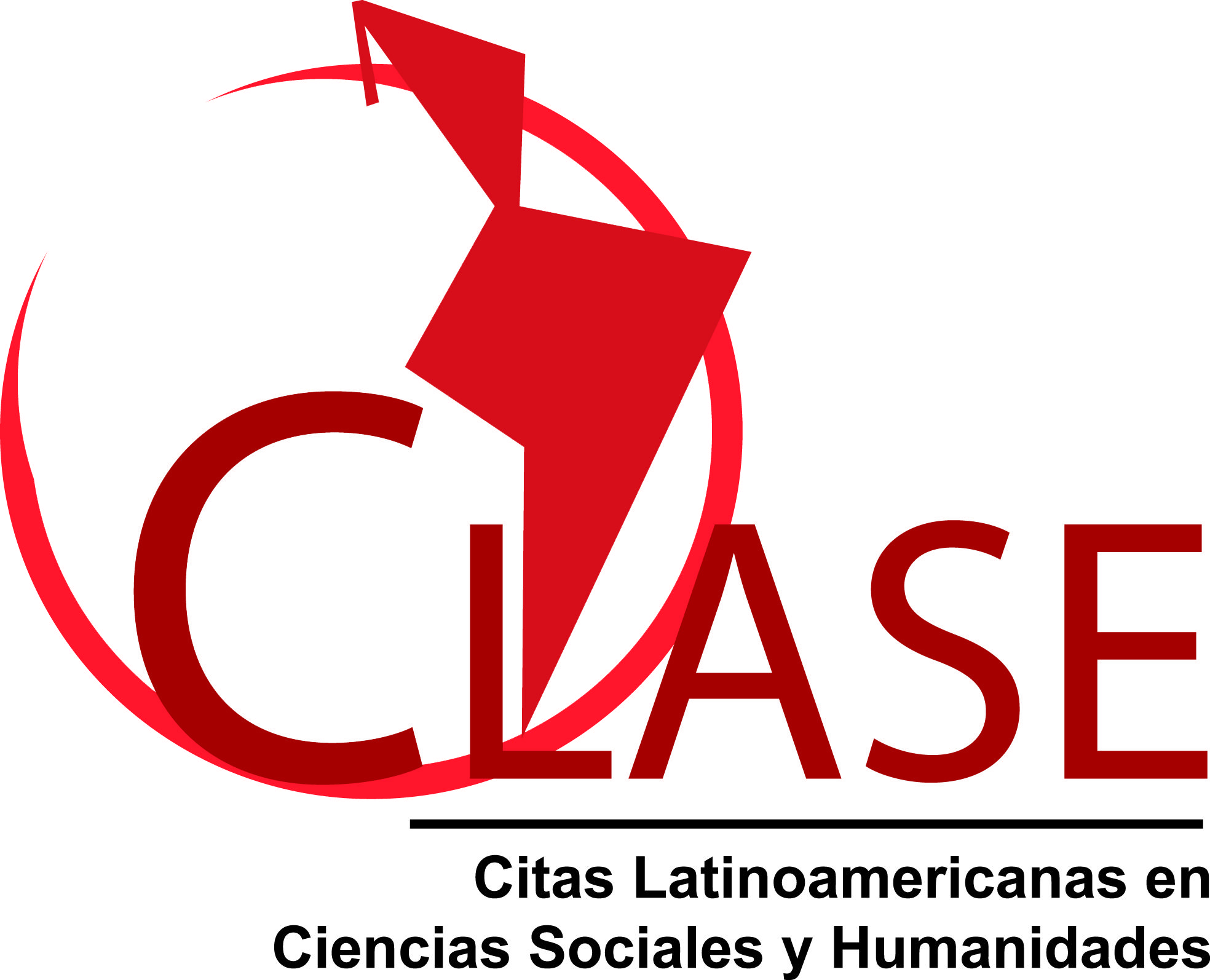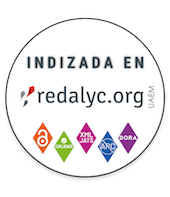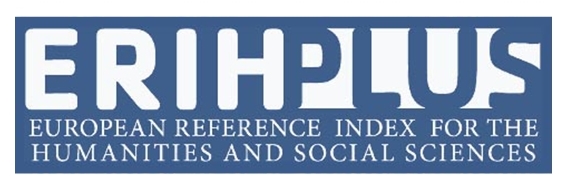Analysis of teacher intervention in elementary education to prevent grooming
DOI:
https://doi.org/10.33010/ie_rie_rediech.v16i0.2465Keywords:
primary education, grooming, Mexico, children and adolescents, the role of the teacherAbstract
The widespread use of the internet and social media has introduced new risks to social interactions. Teachers and parents are particularly concerned about the safety of minors. This exploratory study aimed to assess primary school teachers’ knowledge of online grooming—a form of child sexual abuse—and to explore the educational strategies they employ to protect their students. Through interviews with 12 teachers from four public schools in Zapopan, Jalisco, Mexico, we found that teachers were largely unaware of grooming. Our findings highlight the need for increased training to enable teachers to identify signs of online grooming in their students. Timely interventions by schools and families can help foster a culture of internet safety.
References
Aguilar, D. (2018). El ciberbullying, grooming y sexting, en la política pública mexicana: un tema emergente para el trabajo social. Documentos de Trabajo Social, (61), 331-350. https://dialnet.unirioja.es/servlet/articulo?codigo=7200599
Asociación de Internet MX (2024). 20° Estudio sobre los Hábitos de Usuarios de Internet en México. https://www.asociaciondeinternet.mx/estudios/habitos-de-internet
Alonso-Ruido, P., Estévez, I., Regueiro, B., y Varela-Portela, C. (2024). Victims of child grooming: An evaluation in university students. Societies, 14(1), 7. https://doi.org/10.3390/soc14010007
Andrade, L. (2021). Criminología en las redes sociales: un estudio realizado en la escuela CESUVER a nivel secundaria a través de la campaña #ConectandonosBien en Boca del Rio, Veracruz. Archivos de Criminología, Seguridad Privada y Criminalística, (29), 43-74. https://dialnet.unirioja.es/servlet/articulo?codigo=8333919
Bardin, L. (2002). Análisis de contenido. Akal.
Bengtsson, M. (2016). How to plan and perform a qualitative study using content analysis. NursingPlus Open, 2, 8-14. https://doi.org/10.1016/j.npls.2016.01.001
Bergen, E., Davidson, J., Schulz, A., Schuhmann, P., Johansson, A., Santtila, P., y Jern, P. (2014). The effects of using identity deception and suggesting secrecy on the outcomes of adult-adult and adult-child or -adolescent online sexual interactions. Victims & Offenders, 9(3), 276-298. https://doi.org/10.1080/15564886.2013.873750
Bozzola, E., Spina, G., Agostiniani, R., Barni, S., Russo, R., Scarpato, E., Di Mauro, A., Di Stefano, A. V., Caruso, C., Corsello, G., y Staiano, A. (2022). The use of Social media in children and adolescents: Scoping review on the potential risks. International Journal of Environmental Research and Public Health, 19(16), 9960. https://doi.org/10.3390/ijerph19169960
Braun, V., y Clarke, V. (2006). Using thematic analysis in psychology. Qualitative Research in Psychology, 3(2), 77-101. https://doi.org/10.1191/1478088706qp063oa
Burrus, B., Leeks, K. D., Sipe, T. A., Dolina, S., Soler, R., Elder, R., Barrios, L., Greenspan, A., Fishbein, D., Lindegren, M. L., Achrekar, A., y Dittus, P. (2012). Community preventive services task force. Person-to-person interventions targeted to parents and other caregivers to improve adolescent health: A community guide systematic review. American Journal of Preventive Medicine, 42(3), 316-326. https://doi.org/10.1016/j.amepre.2011.12.001.
Casas, J. A., Ortega-Ruiz, R., y Del Rey, R. (2015). Bullying: The impact of teacher management and trait emotional intelligence. British Journal of Educational Psychology, 85(3), 407-423. https://doi.org/10.1111/bjep.12082
Celik, P. (2024). The effectiveness of school-based child sexual abuse prevention programmes among primary school-aged children: A systematic review. International Journal of Educational Research Open, 7, 100348. https://doi.org/10.1016/j.ijedro.2024.100348
Herrera-López, M., Romera, E. M., y Ortega-Ruiz, R. (2018). Bullying y cyberbullying en Latinoamérica. Un estudio bibliométrico. Revista Mexicana de Investigación Educativa, 23(76), 125-155. https://www.scielo.org.mx/scielo.php?script=sci_arttext&pid=S1405-66662018000100125
Che Yusof, R., Norhayati, M. N., y Mohd Azman, Y. (2022). Efectiveness of school-based child sexual abuse intervention among school children in the new millennium era: Systematic review and meta-analyses. Frontiers in Public Health, 10, 909254. https://doi.org/10.3389/fpubh.2022.90925
Del-Rey, R., Mora-Merchán, J., Casas, J.-A., Ortega-Ruiz, R., y Elipe, P. (2018). Programa «Asegúrate»: efectos en ciberagresión y sus factores de riesgo. Comunicar, (56), 39-48. https://doi.org/10.3916/C56-2018-04
ECPAT [End Child Prostitution, Child Pornography and Taffiking of Children for Sexual Purposes], Interpol [Organización Internacional de Policía Criminal], y UNICEF [Fondo de las Naciones Unidas para la Infancia] (2021a). Disrupting harm in Uganda: Evidence on online child sexual exploitation and abuse. Global Partnership to End Violence against Children. https://safeonline.global/wp-content/uploads/2023/12/DH_Uganda_ONLINE_final-Report.pdf
ECPAT, Interpol, y UNICEF (2021b). Disrupting harm in Kenya: Evidence on online child sexual exploitation and abuse. Global Partnership to End Violence against Children. https://ecpat.org/resource/disrupting-harm-kenya/
ECPAT, Interpol, y UNICEF (2022). Disrupting harm in Ethiopia: Evidence on online child sexual exploitation and abuse. Global Partnership to End Violence against Children. https://ecpat.org/wp-content/uploads/2022/03/DH_Ethiopia_ONLINE_final.pdf
Edwards, R., y Holland, J. (2013). What is qualitative interviewing? Bloomsbury.
Fernando, N., Hakeem, M. A. M., Seneviratne, W., De Silva, M., y Cooray, J. (2021). Online violence against children in urban and semi-urban settlements in Sri Lanka: A research on incidence, nature and scope. Save the Children (Sri Lanka)/WorldVision Lanka. https://resourcecentre.savethechildren.net/document/online-violence-against-children-in-urban-and-semi-urban-settlements-in-sri-lanka-a-research-on-incidence-nature-and-scope
Finkelhor, D., Turner, H., y Colburn, D. (2022). Prevalence of online sexual offenses against children in the US. JAMA Network Open, 5(10), e2234471. https://jamanetwork.com/journals/jamanetworkopen/fullarticle/2797339
Flores, M.-T., Celso-Arellano, P. L., Arámburo-Lizárraga, J., y Rivera, R. (2023). Uso de las redes sociales en niñas, niños y adolescentes de México. Revista de Ciencias Sociales, 29(2), 216-228. https://doi.org/10.31876/rcs.v29i2.39972
Gámez-Guadix, M., Martínez, J., Almendros, C., Martin, C., Preedy, V. R., y Patel, V. B. (2022). The multidimensional online grooming questionnaire. En C. Martin, V. R. Preedy y V. B. (eds.), Handbook of anger, aggression, and violence (pp. 1-13). Springer.
Gámez-Guadix, M., Mateos-Pérez, E., Alcázar, M. A., Martínez-Bacaicoa, J., y Wachs, S. (2023). Stability of the online grooming victimization of minors: Prevalence and association with shame, guilt, and mental health outcomes over one year. Journal of Adolescence, 95(8), 1715-1724. https://doi.org/10.1002/jad.12240
Goldfarb, E. S., y Lieberman, L. D. (2021). Three decades of research: The case for comprehensive sex education. Journal of Adolescent Health, 68(1), 13-27. https://doi.org/10.1016/j.jadohealth.2020.07.036
Gubbels, J., van der Put, C. E., Stams, G.-J. J. M., y Assink, M. (2021). Effective components of school-based prevention programs for child abuse (2021). A Meta-Analytic Review. Clinical Child and Family Psychology Review, 24, 553-578. https://doi.org/10.1007/s10567-021-00353-5
Guest, G., Bunce, A. Y., y Johnson, L. (2006). How many interviews are enough?: An experiment with data saturation and variability. Field Methods, 18(1), 59-82. https://doi.org/10.1177/1525822X05279903
Herrera-López, M., Romera, E., y Ortega-Ruiz, R. (2018). Bullying y cyberbullying en Latinoamérica: un estudio bibliométrico. Revista Mexicana de Investigación Educativa, 23(76), 125-155. https://ojs.rmie.mx/index.php/rmie/article/view/346
Ibanez-Ayuso, M. J., Limón, M. R., y Ruiz-Alberdi, C. M. (2022). Retos virales: análisis del impacto de TikTok para los vínculos familiares. Revista de Ciencias Sociales (Ve), 28(3), 42-53. https://www.redalyc.org/journal/280/28071865003/28071865003.pdf
INEGI [Instituto Nacional de Estadística y Geografía] (2024). Módulo sobre ciberacoso (MOCIBA) 2023. Principales resultados. https://www.inegi.org.mx/programas/mociba/2023/
Jones, L. M., Mitchell, K. J., y Walsh, W. A. (2014). A systematic review of effective youth prevention education: Implications for internet safety education [Boletín]. Crimes Against Children Research Center (CCRC)/University of New Hampshire. https://scholars.unh.edu/ccrc/42/
Kuckartz, U. (2014). Qualitative text analysis. Sage.
Lancioni, F. (2023). Grooming: una mirada concientizadora. El Escriba.
Madigan, S., Villani, V., Azzopardi, C., Laut, D., Smith, T., Temple, J. R., Browne, D., y Dimitropoulos, G. (2018). The prevalence of unwanted online sexual exposure and solicitation among youth: A meta-analysis. Journal of Adolescent Health, 63(2), 133-141. https://doi.org/10.1016/j.jadohealth.2018.03.012
Lanzillotti, A. I., y Korman, G. P. (2018). Conocimiento e identificación del cyberbullying por parte de docentes de Buenos Aires. Revista Mexicana de Investigación Educativa, 23(78), 817-839. http://www.scielo.org.mx/scielo.php?script=sci_arttext&pid=S1405-66662018000300817&lng=es&tlng=es
Lorenzo-Dus, N., Kinzel, A., y Di Cristofaro, M. (2020). The communicative modus operandi of online child sexual groomers: Recurring patterns in their language use, Journal of Pragmatics, 155, 15-27. https://doi.org/10.1016/j.pragma.2019.09.010
Madigan, S., Ly, A., Rash, C. L., Van Ouytsel, J., y Temple, J. R. (2018). Prevalence of multiple forms of sexting behavior among youth: A systematic review and metaanalysis. JAMA Pediatrics, 172(4), 327-335. www.doi.org/10.1001/jamapediatrics.2017.5314
Menesini, E., y Salmivalli, C. (2017). Bullying in schools: The state of knowledge and effective interventions. Psychology, Health & Medicine, 22, 240–253. https://doi.org/10.1080/13548506.2017.1279740
Montiel, I., Carbonell, E., y Pereda, N. (2017). Multiple online victimization of Spanish adolescents: Results from a community sample. Child Abuse & Neglect, 52, 123-134. https://doi.org/10.1016/j.chiabu.2015.12.005
Montiel, I., Carbonell, E., y Salom, M. (2014). Victimización infantil sexual online: online grooming, ciber-abuso y ciber-acoso sexual. En M. Lameiras (coord.) y E. Orts (coords.), Delitos sexuales contra menores. Abordaje psicológico, jurídico y policial (pp. 203-224). Tirant lo Blanch. www.doi.org/10.13140/RG.2.1.2992.7521
Ortega-Barón, J., Machimbarrena, J. M., Calvete, E., Orue, I., Pereda, N., y González-Cabrera, J. (2022). Epidemiology of online sexual solicitation and interaction of minors with adults: A longitudinal study. Child Abuse & Neglect, 13, 105759. https://doi.org/10.1016/j.chiabu.2022.105759
Pacheco, B., Lozano, J., y González, N. (2018). Diagnóstico de utilización de redes sociales: factor de riesgo para el adolescente. RIDE Revista Iberoamericana para la Investigación y el Desarrollo Educativo, 8(16), 53-72. https://doi.org/10.23913/ride.v8i16.334
Pavez, I., y García-Béjar, L. (2020). Ciberacoso desde la perspectiva docente: discursos, percepciones y estrategias de profesores en dos ciudades de Chile y México. Perfiles Educativos, 42(168), 28-41. https://doi.org/10.22201/iisue.24486167e.2020.168.58850
Podestá, S. (2019). Metáforas del rol docente en una intervención sobre acoso escolar. Psicoperspectivas, 18(1). https://www.psicoperspectivas.cl/index.php/psicoperspectivas/article/view/1451
Ringenberg, T., Seigfried-Spellar, K., Rayz, J., y Rogers, M. (2022). A scoping review of child grooming strategies: pre- and post-internet, Child Abuse & Neglect, 123, 105392. https://doi.org/10.1016/j.chiabu.2021.105392
Resett, S. (2021). Grooming online, sexting y problemas emocionales en adolescentes argentinos. Ciencias Psicológicas, 15(1), e-2397. https://doi.org/10.22235/cp.v15i1.2397
SEJ [Secretaría de Educación del Estado de Jalisco] (2023). Cultura de paz. Protocolo de actuación escolar para la prevención, detección y atención en casos de violencia contra niñas, niños y adolescentes del Estado de Jalisco. https://apprende.jalisco.gob.mx/wp-content/uploads/2022/03/ProtocoloActuacionescolarparalaprevenciondeteccionatencion.pdf
SEP [Secretaría de Educación Pública] (2011). Formación Cívica y Ética. Guía para el maestro de primaria, quinto año. https://www.gob.mx/cms/uploads/attachment/file/15952/Programa_Quinto_grado_-_Formacion_Civica_y_Etica.pdf
Sklenarova, H., Schulz, A., Schuhmann, P., Osterheider, M., y Neutze, J. (2018). Online sexual solicitation by adults and peers – Results from a population based German sample. Child Abuse & Neglect, 76, 225-236. https://doi.org/10.1016/j.chiabu.2017.11.005
Sood, S., Kostizak, K., Mertz, N., Stevens, S., Rodrigues, F., y Hauer, M. (2021). What works to address violence against children (VAC) in and around schools. Trauma, Violence, & Abuse, 23(4), 1317-1329. https://doi.org/10.1177/1524838021998309
Trucco, D., y Palma, A. (eds.) (2020). Infancia y adolescencia en la era digital: un informe comparativo de los estudios de Kids Online del Brasil, Chile, Costa Rica y el Uruguay [Documentos de Proyectos, LC/TS.2020/18/REV.1]. CEPAL. https://repositorio.cepal.org/handle/11362/45212
UNESCO [Organización de las Naciones Unidas para la Educación, la Ciencia y la Cultura] (2019). Behind the numbers: Ending school violence and bullying. https://unesdoc.unesco.org/ark:/48223/pf0000366483
UNICEF [Fondo de las Naciones Unidas para la Infancia] (2017). Annual results report 2017. Child protection. https://www.unicef.org/media/47761/file/Child_Protection_2017_Annual_Results_Report.pdf
Vaismoradi, M., Jones, J., Turunen, H., y Snelgrove, S. (2016). Theme development in qualitative content analysis and thematic analysis. Journal of Nursing Education and Practice, 6(5), 100-110. http://doi.org/10.5430/jnep.v6n5p100
Wachs, S., Jiskrova, G. K., Vazsonyi, A. T., Wolf, K. D., y Junger, M. (2016). A cross-national study of direct and indirect effects of cyberbullying on cybergrooming victimization via self-esteem. Psicología Educativa, 22(1), 61-70. https://doi.org/10.1016/j.pse.2016.01.002
Whittle, H., Hamilton-Giachritsis, C., Beech, A., y Collings, G. (2013). A review of online grooming: Characteristics and concerns. Aggression and Violent Behavior, 18(1), 62-70. https://doi.org/10.1016/j.avb.2012.09.003
Wolak, J., Finkelhor, D., Mitchell, K. J., e Ybarra, M. (2008). Online “predators” and their victims: Myths, realities, and implications for prevention and treatment. American Psychologist, 63(2), 111-128. https://doi.org/10.1037/0003-066X.63.2.111
WHO [World Health Organization] (2022, nov. 24). What works to prevent online violence against children? Exceutiver summary. https://www.who.int/publications/i/item/9789240062085
Yubero, S., Larrañaga, E., Navarro, R., y Elche, M. (2018). Padres, hijos e internet. Socialización familiar de la red. Universitas Psychologica, 17(2), 1-13. https://doi.org/10.11144/Javeriana.upsy17-2.phis
Zhang-Kennedy, L., y Chiasson, S. A. (2021). A systematic review of multimedia tools for cybersecurity awareness and education. ACM Computing Surveys (CSUR), 54(1), 12. https://doi.org/10.1145/3427920
Downloads
Published
How to Cite
Issue
Section
License
Copyright (c) 2025 Marco Tulio Flores Mayorga

This work is licensed under a Creative Commons Attribution-NonCommercial 4.0 International License.




















